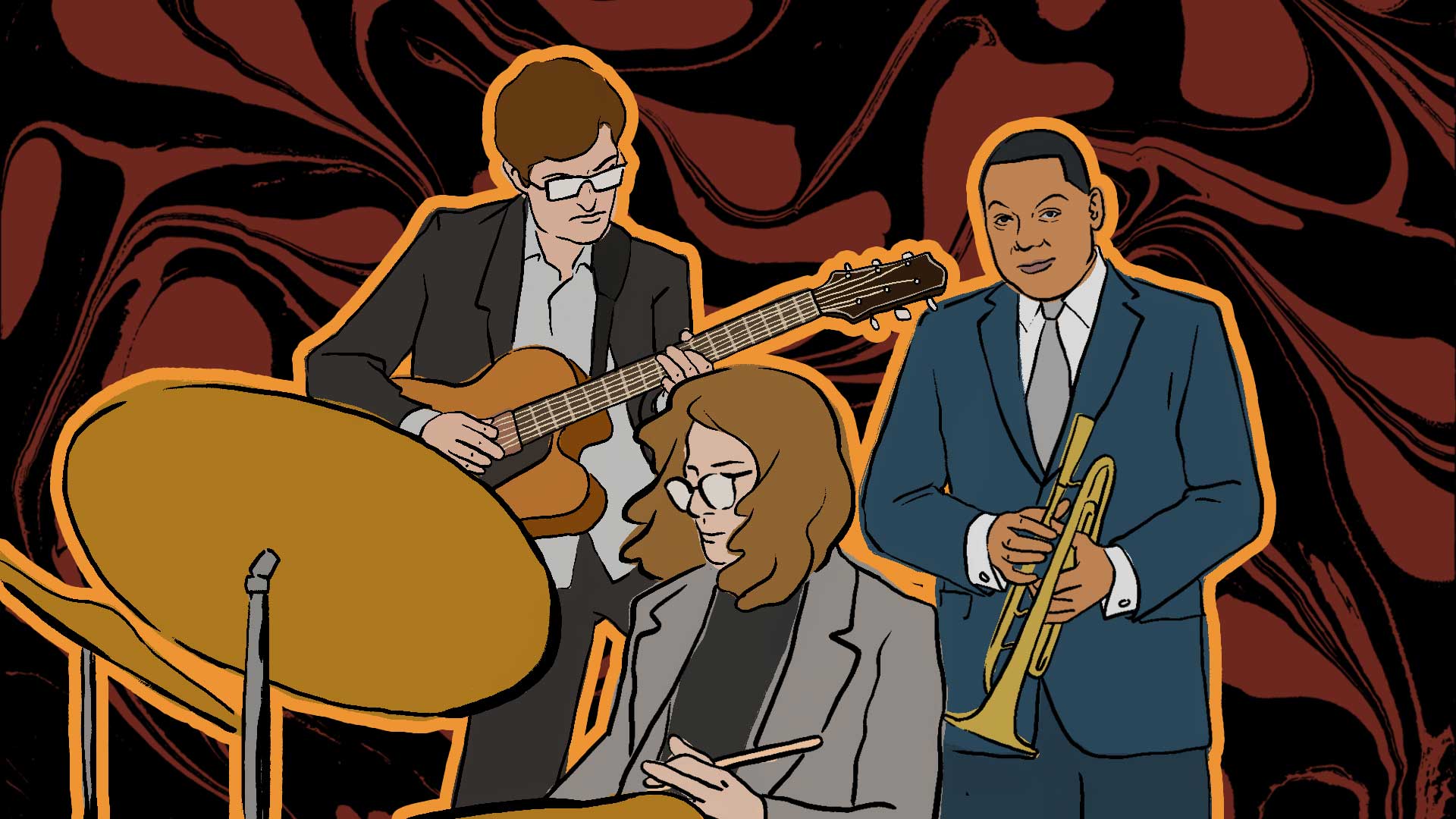Do you hear that? Listen, it’s in the air. It’s jazz, baby. It is the recommended soundtrack to your videos on social media, or maybe you stumble on jazz musicians going viral while scrolling. No need to dig deep, the genre is going mainstream as well. This year, at the 2023 Grammy Awards, Samara Joy won Best New Artist, and also took home Best Jazz Vocal Album for her album Linger Awhile. In 2022, multi-hyphenated jazz musician Jon Batiste obtained no less than 11 Grammy Awards nominations, and won Album of the Year for We Are, on top of four other awards.
Acclaimed trumpeter Wynton Marsalis once said: “Jazz music celebrates life! Human life; the range of it, the absurdity of it, the ignorance of it, the greatness of it, the intelligence of it, the sexuality of it, the profundity of it. And it deals with it.” Let this be an invitation to discover jazz, or to dig deeper into the music. Here’s how to start.
Putting some respect on Jazz’s name
Let’s be real… jazz can feel intimidating. Why does it have that reputation? It’s not so simple – we need to deep dive into cultural and historical factors. It’s important to understand the historical aspect of jazz to really appreciate the music. “Jazz music has been around for 100 years,” reminds Montreal-based Valérie Lacombe, drummer and jazz enthusiast on its rich and complex history.
Another crucial element which often fails to be underlined: jazz is Black music. Racism is the first and foremost reason why jazz encounters resistance. The genre originates from Black American folks of New Orleans in the late 19th and early 20th century. Early jazz was performed in the Storyville district of New Orleans, where sex workers had their quarters. Then, jazz took off in speakeasies during the Prohibition (1920 to 1933), where it was performed in nightclubs tied to organized crime. “It had those early associations because of racism then that got reinforced with associations with prostitution and crime,” explains Sam Kirmayer, guitarist and jazz history teacher at Concordia University .
As the music genre got integrated and transcended racial barriers, a new type of jazz emerged called bebop. It was pioneered by groundbreaking and influential saxophonist Charlie Parker, also an opiate addict in the aftermath of a car accident. Heroin was prevalent in the scene, resurfacing jazz’s drug association. At the same time, jazz was also adopted by white counterculture, such as the Beatnik movement.
Things do not stop there, but let’s jump ahead to a couple of milestones. Kind of Blue, by Miles Davis, was released in 1959. It is the highest-selling jazz record of all time, and contributed to making the genre more accessible and mainstream. In the early 80s, Wynton Marsalis sparked a jazz revival and helped the genre gain recognition when he won a Grammy in jazz and classical music in 1983 – which is the only time that’s ever happened.
Jazz was also introduced in universities, where it was taught by professors following a curriculum similar to classic music, although it was previously a practice of mentorship and oral tradition. As the white establishment validates the art form, jazz is now crystallized as an elite, sophisticated thing. Whew. “It’s not as if there’s somebody deliberately saying we’re gonna orchestrate this mass media campaign to discredit this thing, but I’d also think it’s not a coincidence that one of the most significant contributions from Black cultures is slandered the way it was,” says Sam Kirmayer.
Yet, jazz isn’t reserved for jazz musicians, or people with a music education. Although it has its specific sounds and stylistic elements, at the end of the day, “These are just notes and chords,” according to Valérie Lacombe. As a matter of fa/ct, a great number of musicians, even to this day, did not study jazz in university.
Cultural appreciation
From a musical point of view, a lot is happening as we listen in. “A lot of popular music is harmonically very different from jazz. Often, jazz is instrumental music, which is not something we are used to,” points out Valérie Lacombe. In other words, it is possible to simply lack habituation. “If this was the music we heard in pop culture, it would be no mystery to anybody,” she observes. And more people would fall in love with the music if it was more available. “It’s just because it’s not part of a culture, and there’s a reason for that”.
In recent years, there has been more interest in Black culture and music. “In the last few years, it seems to me that Black artists are finally getting more spotlight than previously since the 2000s. More jazz elements are being incorporated into pop music due to those artists,” says Valérie Lacombe. Maybe the industry is starting to acknowledge that music should evolve in people’s interests. As a result, there are fewer barriers to listening to this jazz music. This is your invitation to join the party.
Now that we’ve piqued your interest (you’ve made it this far!), where do you actually turn to enjoy the music? We’ll explore some answers in Part 2 of our So You Want To Jazz Up Your Life series.
Written by Christelle Saint-Julien
Illustration by Yihong Guo





















